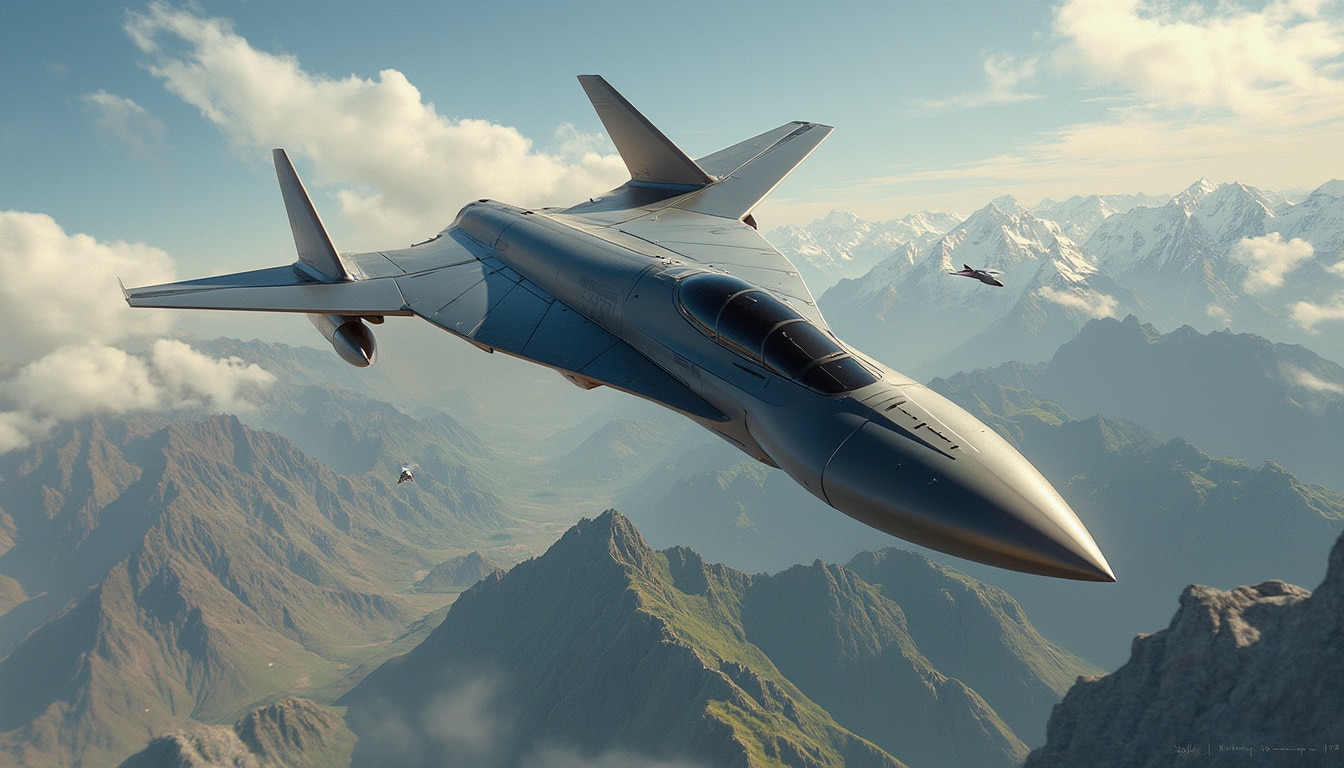The aerospace industry is rapidly evolving, with companies competing to secure crucial contracts that will shape the future of hypersonic technologies. Recently, a notable competitor of SpaceX has made headlines by winning two major contracts aimed at advancing hypersonic testing. These contracts signify a leap forward in military and civilian applications, promising a new era in aerospace innovation. The intense competition among established giants like Boeing, Lockheed Martin, and Northrop Grumman, along with emerging players such as Rocket Lab and Virgin Galactic, highlights the remarkable developments in this cutting-edge field. This article delves into the implications of these contracts, the technologies involved, and the broader context of hypersonic advancements.
Understanding Hypersonic Technology
Hypersonic technology refers to flight at speeds exceeding five times the speed of sound, or Mach 5. This advanced category of flight has generated substantial interest among defense contractors due to its potential for rapid deployment and enhanced striking capabilities in military operations. The race to develop hypersonic weapons has intensified, with countries including the United States, China, and Russia investing heavily in research and development.

The Implications of Hypersonic Speed
Achieving hypersonic speed presents numerous advantages in both defense and commercial sectors. For military applications, hypersonic weapons can deliver payloads over long distances at unprecedented speeds, making them harder to detect and intercept. This gives armed forces a strategic edge in potential conflicts. On the commercial front, hypersonic travel could revolutionize air travel, significantly reducing flight times between distant locations.
Recent Developments in Hypersonic Testing
The two contracts secured by the SpaceX competitor revolve around hypersonic testing initiatives. These projects allow for the validation of cutting-edge technologies essential for creating effective hypersonic vehicles that can withstand extreme conditions. Winner of the contracts, Kratos Defense & Security Solutions, is positioned to drive innovation in this area alongside established players like Aerojet Rocketdyne.
Key Players in Hypersonic Development
Many companies are involved in the hypersonic race, each contributing unique technologies and expertise. For instance, Boeing and Northrop Grumman are focused on developing advanced systems that can facilitate hypersonic flight. Furthermore, Raytheon is contributing its knowledge in missile systems that integrate hypersonic technologies. Understanding the collaboration and competition among these industry giants is essential to grasping the future of hypersonic flight.
The Role of Contracts in Shaping the Industry
Contracts play a pivotal role in the aerospace industry as they pave the way for funding and resources needed for research, development, and production. The recent hypersonic testing contracts highlight several important elements:
- Funding Innovation: Significant funding from government contracts fuels innovation and growth within the sector, allowing companies to develop state-of-the-art technologies.
- Market Dynamics: Successful contract bids can shift market dynamics, leading to new partnerships and collaborations as companies seek to enhance their competitive advantage.
- National Security: Hypersonic testing contracts have critical implications for national security, as governments strive to maintain technological superiority over potential adversaries.
Analyzing Contract Winners
The recent contracts awarded to Kratos signal a shift in the competitive landscape. As a nimble player, Kratos can adapt quickly to emerging market needs and government requirements. Other competitors, such as Rocket Lab and Blue Origin, also play a significant role, contributing their own unique approaches to hypersonic development.
The Future of Hypersonic Testing Initiatives
With new contracts in place, the next steps involve not only executing the agreed-upon projects but also laying the groundwork for future innovations. Military applications will undoubtedly dominate the conversation surrounding hypersonic technologies, but civilian uses are likely to emerge as well. Companies like Virgin Galactic may explore the commercial viability of hypersonic travel, driven by the latest advancements in aerospace engineering.
Challenges Facing Hypersonic Development
Despite the exciting prospects of hypersonic flight, several challenges must be addressed to move forward. These obstacles include:
- Technical Hurdles: Maintaining stability and control during hypersonic flight presents significant technical challenges, as vehicles encounter extreme temperatures and pressures.
- Cost of Development: The financial investment required for hypersonic projects can be substantial, potentially deterring smaller companies from entering the market.
- Regulatory Concerns: As military and civilian uses of hypersonic technology evolve, regulatory frameworks must keep pace to ensure safety and compliance.
Addressing Technical Challenges
To overcome technical challenges, continuous research and innovative solutions are necessary. Companies like Northrop Grumman and Raytheon are at the forefront of developing new materials and control systems to improve the performance of hypersonic vehicles. Collaboration among various stakeholders in the aerospace sector can also foster the sharing of ideas and resources, enhancing the industry’s overall capabilities.
Navigating Cost and Investment Dynamics
Finding a balance between cost efficiency and technological advancement remains a core issue in hypersonic development. Smaller firms often lack the capital to invest heavily in R&D, but partnerships with larger corporations or government contracts can offset these costs. As the demand for hypersonic technologies grows, investment will likely increase, triggered by emerging needs and emerging threats.
The Future Landscape of Aerospace and Hypersonics
The aerospace sector stands at a transformative crossroads. With increasing focus on hypersonic technologies, the future landscape will likely favor agility and innovation from smaller companies working alongside industry titans. This diversification creates a dynamic environment ripe for collaboration.
Company Recent Contract Focus Area
As the competitive landscape evolves, the collaboration between established companies such as Lockheed Martin and Boeing, paired with innovative entrants like Rocket Lab, will define the future of hypersonic technologies. Advancements will emerge from both military and civilian contexts, shaping how we think about flight altogether.




Leave a Reply